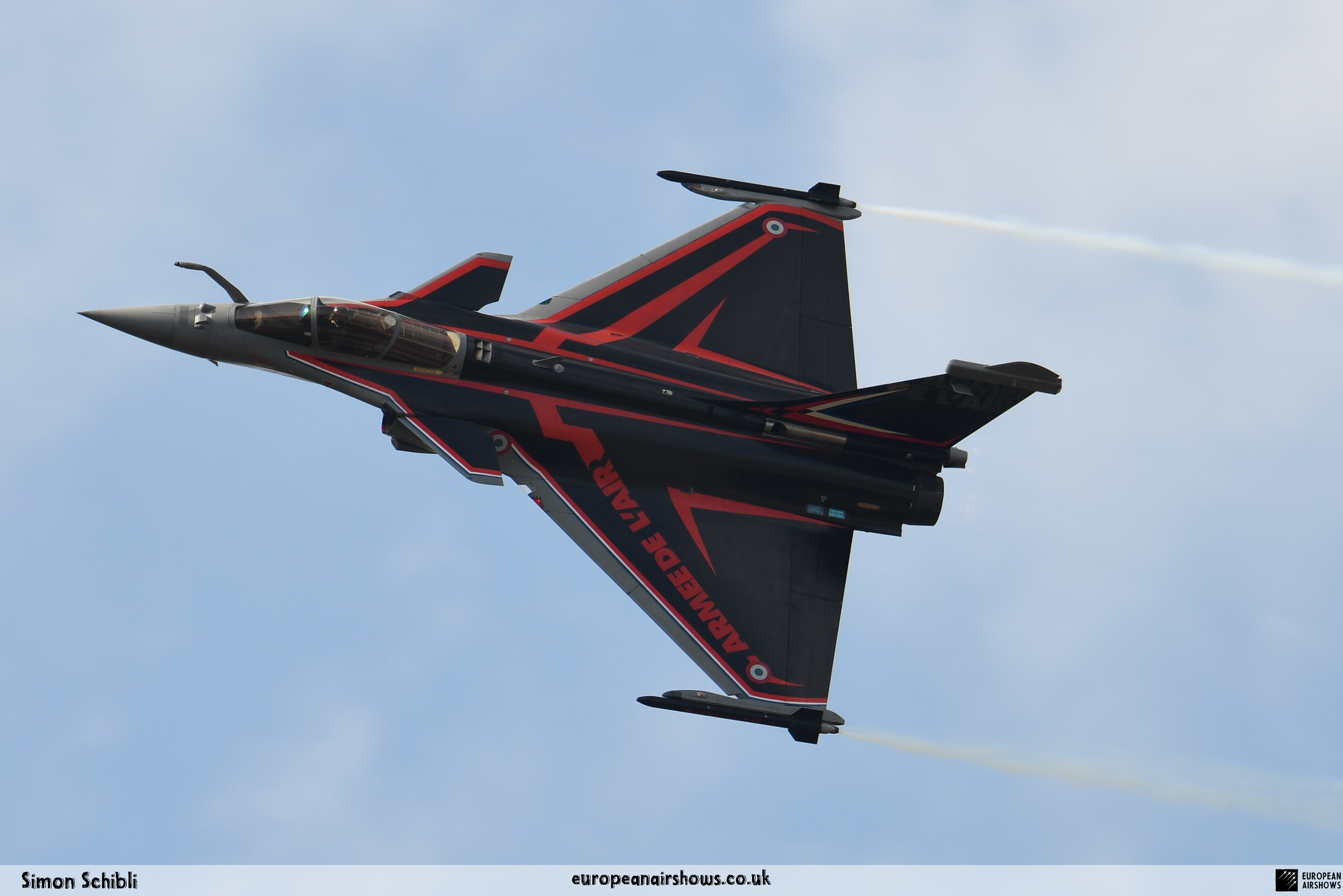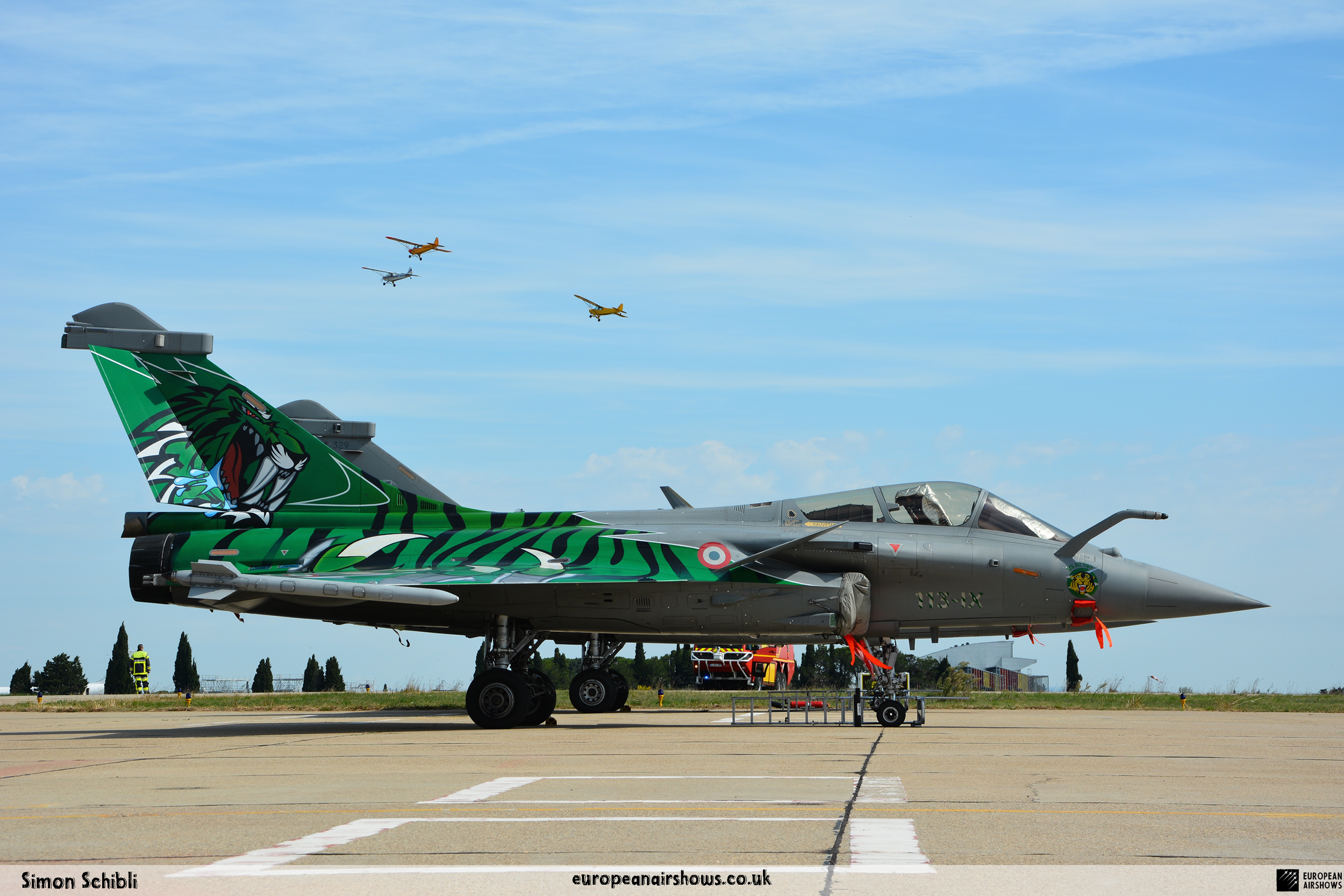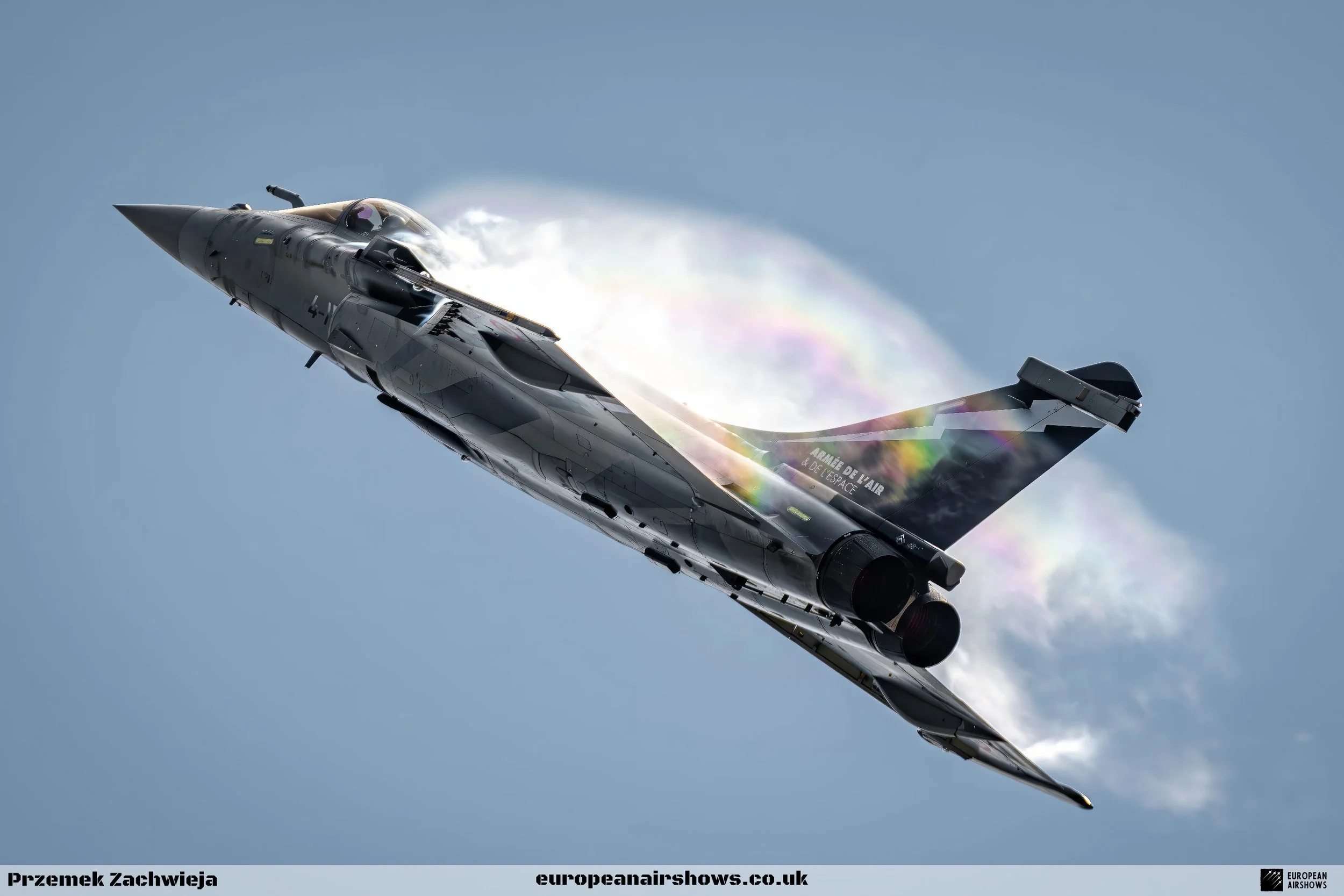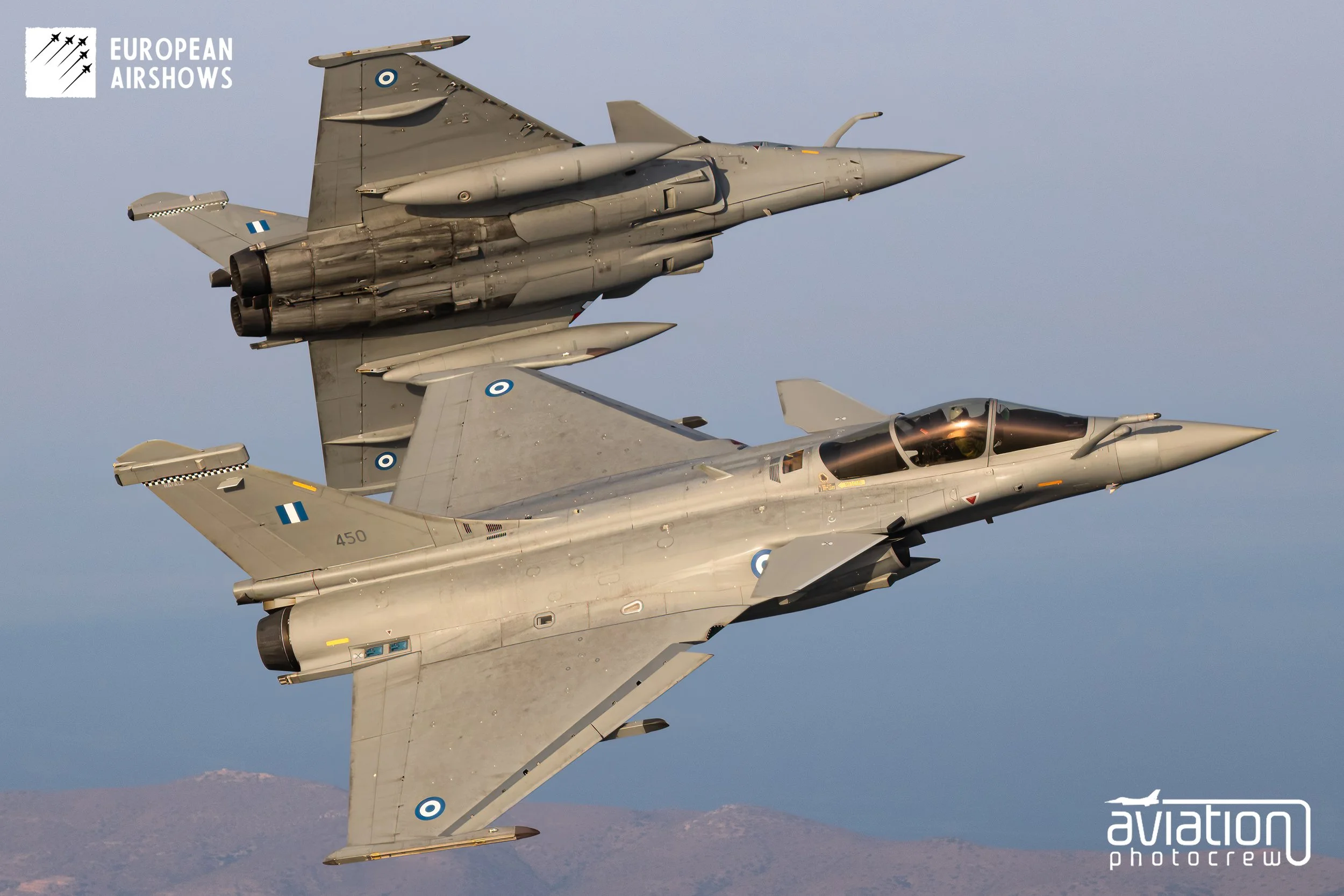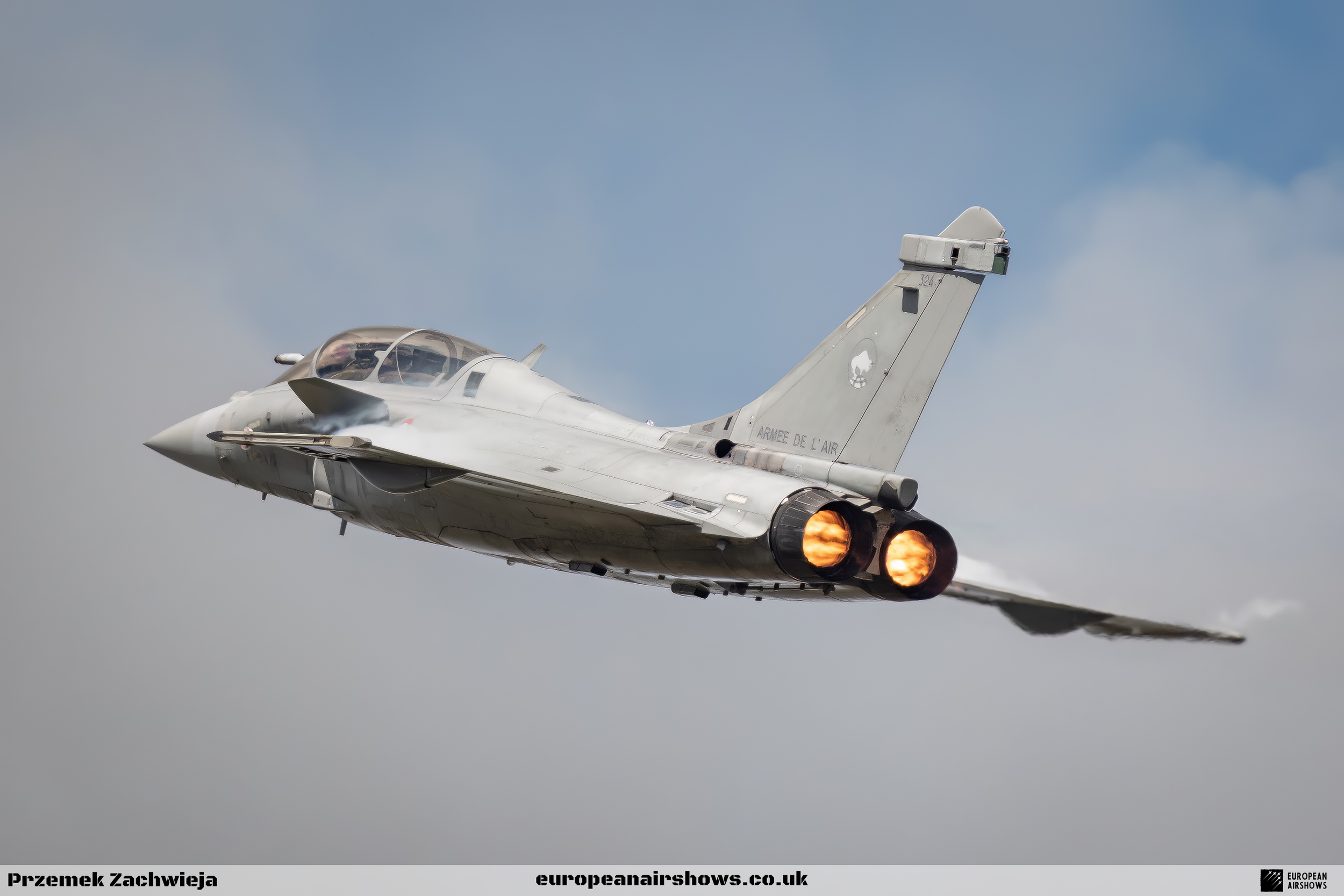
July 4 / Dassault Rafale first flight
First Flight 4 July 1986
Dassault Rafale
The Dassault Rafale (meaning "gust of wind", or "burst of fire" in a more military sense) is a French twin-engine, canard delta wing, multirole fighter aircraft designed and built by Dassault Aviation. Equipped with a wide range of weapons, the Rafale is intended to perform air supremacy, interdiction, aerial reconnaissance, ground support, in-depth strike, anti-ship strike and nuclear deterrence missions. The Rafale is referred to as an "omnirole" 4.5th generation aircraft by Dassault.
In the late 1970s, the French Air Force and French Navy were seeking to replace and consolidate their existing fleets of aircraft. In order to reduce development costs and boost prospective sales, France entered into an arrangement with the UK, Germany, Italy and Spain to produce an agile multi-purpose "Future European Fighter Aircraft" (which would become the Eurofighter Typhoon). Subsequent disagreements over workshare and differing requirements led to France's pursuit of its own development programme. Dassault built a technology demonstrator which first flew in July 1986 as part of an eight-year flight-test programme, paving the way for the go-ahead of the project. The Rafale is distinct from other European fighters of its era in that it is almost entirely built by one country, involving most of France's major defence contractors, such as Dassault, Thales and Safran.
Many of the aircraft's avionics and features, such as direct voice input, the RBE2 AA active electronically scanned array (AESA) radar and the optronique secteur frontal infra-red search and track (IRST) sensor, were domestically developed and produced for the Rafale programme. Originally scheduled to enter service in 1996, the Rafale suffered significant delays due to post-Cold War budget cuts and changes in priorities. There are three main variants: Rafale C single-seat land-based version, Rafale B twin-seat land-based version, and Rafale M single-seat carrier-based version.
Introduced in 2001, the Rafale is being produced for both the French Air Force and for carrier-based operations in the French Navy. The Rafale has been marketed for export to several countries and was selected for purchase by the Egyptian Air Force, the Indian Air Force, the Indian Navy, the Qatar Air Force, the Hellenic Air Force, the Croatian Air Force, the Indonesian Air Force and the United Arab Emirates Air Force. The Rafale has been used in combat in Afghanistan, Libya, Mali, Iraq and Syria.
In the mid-1970s, the French Air Force (Armée de l'Air) and French Navy (Marine Nationale) had separate requirements for a new generation of fighters to replace those in or about to enter service. Because their requirements were similar, and to reduce cost, both services issued a common request for proposal. In 1975, the country's Ministry of Aviation initiated studies for a new aircraft to complement the upcoming and smaller Dassault Mirage 2000, with each aircraft optimized for differing roles.
The Rafale aircraft development programme was the end product of efforts by various European countries for a common fighter aircraft. In 1979, Dassault-Breguet (later Dassault Aviation) joined the MBB/BAe "European Collaborative Fighter" project which was renamed the "European Combat Aircraft" (ECA). The company contributed the aerodynamic layout of a prospective twin-engine, single-seat fighter; however, the project collapsed in 1981 due to differing operational requirements of each partner country. In 1983, the "Future European Fighter Aircraft" (FEFA) programme was initiated, bringing together France, Italy, Spain, West Germany and the United Kingdom to jointly develop a new fighter, although the latter three had their own aircraft developments. French officials envisioned a lightweight, multirole aircraft that—in addition to fulfilling both air force and naval roles—it was believed, would be attractive on the export fighter market. This was in contrast to the British requirement for a heavy long-range interceptor. France also demanded a lead role, with commensurate technical and industrial primacy, whereas the other countries were accepting of a more egalitarian programme structure.
There was little common ground between France and the other members of this project, but by 1983, the five countries had agreed on a European Staff Target for a future fighter. Nevertheless, differences persisted, and so France withdrew from the multilateral talks in July 1985 to preserve the technological independence of its fighter aircraft industry. West Germany, the UK and Italy opted out and established a new European Fighter Aircraft (EFA) programme. In Turin, on 2 August 1985, West Germany, the UK and Italy agreed to go ahead with the EFA, and confirmed that France, along with Spain, had chosen not to proceed as a member of the project. Despite pressure from France, Spain rejoined the EFA project in early September 1985. The four-nation project eventually resulted in the Eurofighter Typhoon's development.
In France, the government proceeded with its own programme. The Ministry of Defence required an aircraft capable of air-to-air and air-to-ground, all-day and adverse weather operations. As France was the sole developer of the Rafale's airframe, avionics, propulsion system and armament, the resultant aircraft was to replace a multitude of aircraft in the French Armed Forces. The Rafale would perform roles previously filled by an assortment of specialised platforms, including the Jaguar, Mirage F1C/CR/CT, Mirage 2000C/-5/N in the French Air Force, and the F-8P Crusader, Étendard IVP/M and Super Étendard in French Naval Aviation.
Rafale Facts
Multirole Capability: The Rafale is a true multirole aircraft, meaning it can perform a wide range of missions including air superiority, ground attack, reconnaissance, and nuclear deterrence. This versatility allows it to replace several different types of aircraft in various air forces.
Advanced Avionics: The Rafale is equipped with state-of-the-art avionics, including the RBE2-AA active electronically scanned array (AESA) radar. This radar provides superior detection capabilities, allowing the aircraft to track multiple targets simultaneously and operate effectively in complex environments.
Stealth Features: While not a stealth aircraft in the same vein as the F-22 Raptor, the Rafale incorporates several stealth features to reduce its radar cross-section. These include the use of composite materials, optimized airframe design, and radar-absorbent materials.
SPECTRA Self-Protection Suite: One of the Rafale’s standout features is its SPECTRA (Système de Protection et d’Évitement des Conduites de Tir du Rafale) electronic warfare system. SPECTRA provides advanced threat detection and jamming capabilities, significantly enhancing the aircraft’s survivability in hostile environments.
High Agility: The Rafale is known for its exceptional agility, thanks to its delta wing design and canard foreplanes. These features give it excellent manoeuvrability, making it a formidable opponent in dogfights.
Carrier and Land-Based Versions: The Rafale comes in two main versions: the Rafale C (single-seat, land-based), Rafale B (two-seat, land-based), and Rafale M (single-seat, carrier-based). The Rafale M is specifically designed for operations from aircraft carriers and includes features such as strengthened landing gear and an arrestor hook.
Nuclear Capability: The Rafale is capable of delivering nuclear weapons, making it a key component of France’s nuclear deterrence strategy. It can carry the ASMP-A nuclear missile, which has a range of over 500 kilometres.
Interoperability: The Rafale is designed to be highly interoperable with other NATO and allied forces. It can communicate and share data with other aircraft and ground stations, enhancing its effectiveness in coalition operations.
Combat Proven: The Rafale has seen extensive combat use since its introduction. It has been deployed in various conflict zones, including Afghanistan, Libya, Mali, Iraq, and Syria, where it has performed a wide range of missions from air strikes to reconnaissance.
Export Success: While initially developed for the French Air Force and Navy, the Rafale has also been successful in the international market. Countries such as India, Egypt, and Qatar have purchased the Rafale, recognizing its advanced capabilities and versatility.



